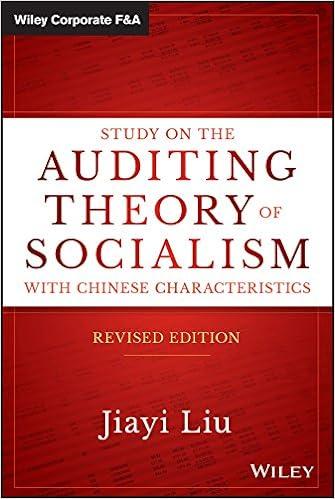Question
Activity-Based Costing and Customer-Driven Costs Objective 2, 3 Grundvig Manufacturing produces several types of bolts used in aircraft. The bolts are produced in batches and
Activity-Based Costing and Customer-Driven Costs
Objective 2, 3
Grundvig Manufacturing produces several types of bolts used in aircraft. The bolts are produced in batches and grouped into three product families. Because the product families are used in different kinds of aircraft, customers also can be grouped into three categories, corresponding to the product family that they purchase. The number of units sold to each customer class is the same. The selling prices for the three product families range from $0.50 to $0.80 per unit. Historically, the costs of order entry, processing, and handling were expensed and not traced to individual customer groups. These costs are not trivial and totaled $9,000,000 for the most recent year. Recently, the company started emphasizing a cost reduction strategy with an emphasis on creating a competitive advantage.
Upon investigation, management discovered that order-filling costs were driven by the number of customer orders processed with the following cost behavior:
Step-fixed cost component: $50,000 per step (2,000 orders define a step)
Variable cost component: $20 per order
The expected customer orders for the year total 200,000. The expected usage of the order-filling activity and the average size of an order by customer category follow:
| Category I | Category II | Category III | |||||||
| Number of orders | 100,000 | 60,000 | 40,000 | ||||||
| Average order size | 600 | 1,000 | 1,500 | ||||||
As a result of cost behavior analysis, the marketing manager recommended the imposition of a charge per customer order. The charge was implemented by adding the cost per order to the price of each order (computed by using the projected ordering costs and expected orders). This ordering cost was then reduced as the size of the order increased and was eliminated as the order size reached 2,000 units. Within a short period of communicating this new price information to customers, the average order size for all three product families increased to 2,000 units.
Required:
Conceptual Connection Grundvig traditionally has expensed order-filling costs. What is the most likely reason for this practice?
Calculate the cost per order for each customer category. (Note: Round to two decimal places.)
Conceptual Connection Calculate the reduction in order-filling costs produced by the change in pricing strategy (assuming that resource spending is reduced as much as possible and that the total units sold remain unchanged). Explain how exploiting customer activity information produced this cost reduction. Would any other internal activities benefit from this pricing strategy?
Step by Step Solution
There are 3 Steps involved in it
Step: 1

Get Instant Access to Expert-Tailored Solutions
See step-by-step solutions with expert insights and AI powered tools for academic success
Step: 2

Step: 3

Ace Your Homework with AI
Get the answers you need in no time with our AI-driven, step-by-step assistance
Get Started


